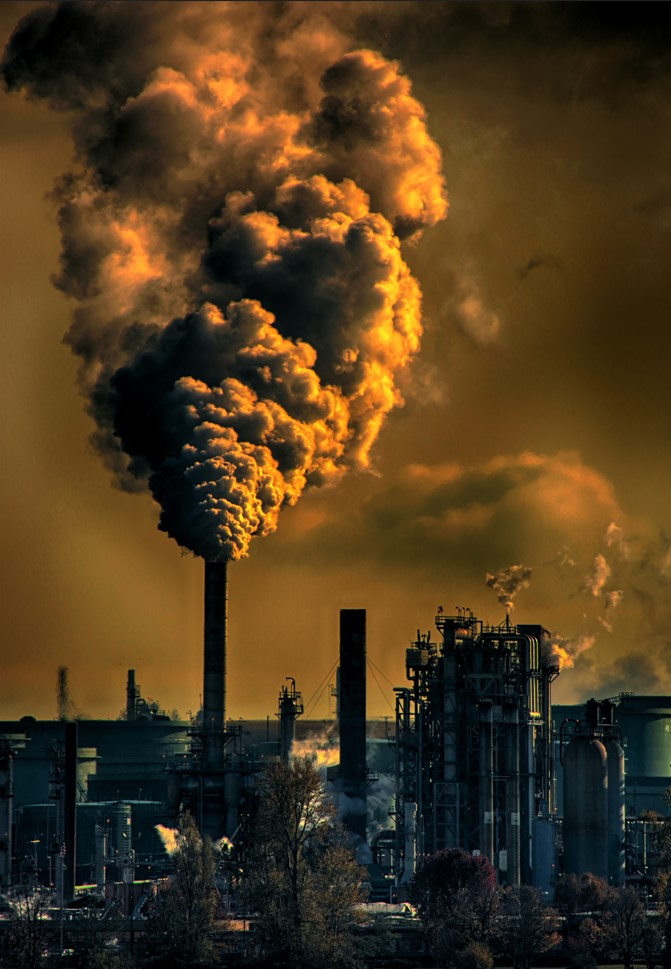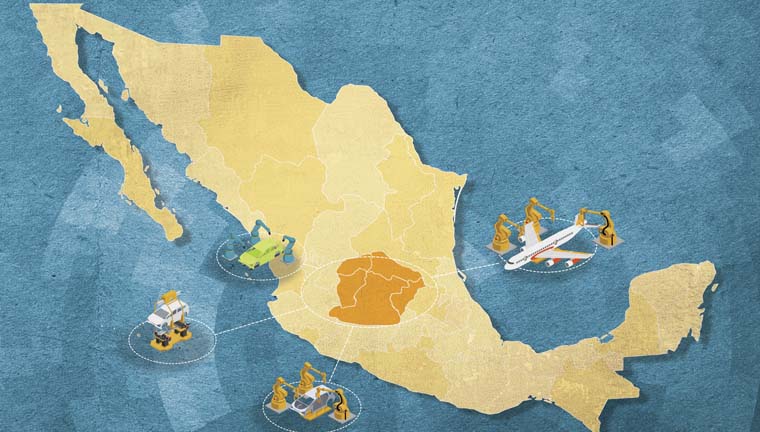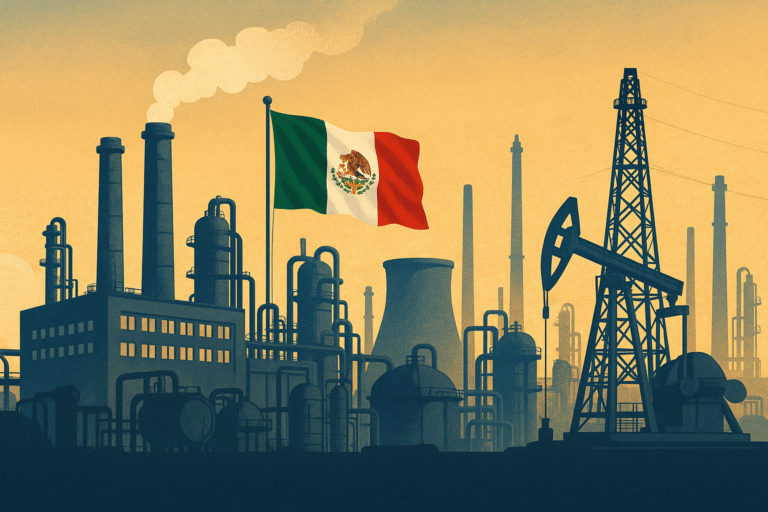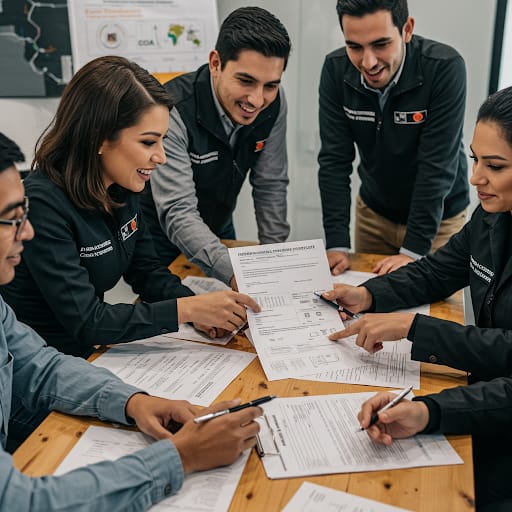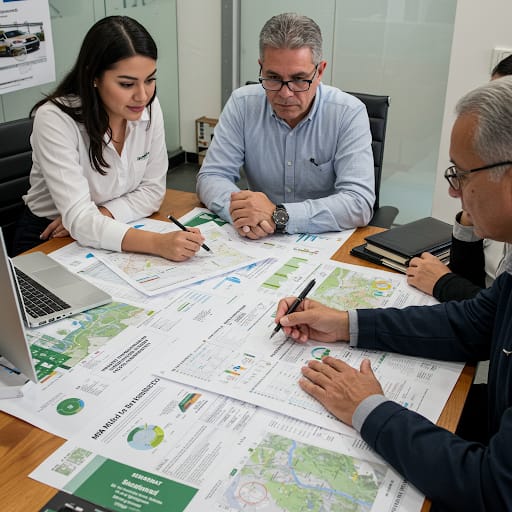Single Environmental License (LAU) / Environmental License for Fixed Sources (LAFF) / Environmental License Qro (LAQro)
Keywords:
- Fixed Source: Any facility established in a single location with the purpose of carrying out industrial, commercial, service, or other activities that generate or may generate pollutant emissions into the atmosphere.
- Natural Person: Also known as an individual, is anyone whose real existence is verifiable and who, by the mere fact of existing as a human being, acquires a series of rights and obligations towards society.
- Legal Entity: A group of individuals who join together for a collective purpose. These entities are created by law and do not have a physical or material reality.
- Pollutant Emission: The direct or indirect discharge of any substance or energy, in any of its physical states and forms, that, upon being incorporated into or acting within any medium, alters or modifies its natural composition or condition.
Objectives:
Recognizing the importance of companies obtaining an environmental license to maintain controls in monitoring and incorporating preventive or corrective measures for discharges and emissions into the atmosphere.
Summary:
An environmental license is a permit issued by an environmental authority through an administrative act to an individual or entity, allowing them to carry out a project or activity under their jurisdiction that may cause severe degradation of renewable resources. This is in accordance with regulatory provisions concerning the environment, environmental changes, or significant and notable landscape alterations. The license also establishes the requirements, obligations, and conditions that permit holders must comply with to prevent, mitigate, compensate, correct, protect, and manage the environmental impact of the authorized project, work, or activity.
The Single Environmental License (LAU) is an environmental policy instrument that consolidates the various environmental obligations of fixed-source operators through a unified process of permits and conservation approvals as per environmental regulations.
This process applies to both individuals and legal entities, including owners of industrial, commercial, service, and public recreation businesses responsible for pollutant discharges into the environment.
Introduction:
The Single Environmental License (LAU) is a regulation-based authorization for the operation and functioning of fixed sources under federal jurisdiction in atmospheric matters.
The basis for its operation is contained in the secretarial agreements published in the Official Gazette of the Federation (DOF) on April 11, 1997, and April 9, 1998.
The LAU is issued by SEMARNAT through the General Directorate for Air Quality Management, Emissions Registry, and Pollutant Transfer in the case of the Mexico City Metropolitan Area, and through SEMARNAT’s Federal Delegations in the states, maintaining the competencies and attributions established in environmental matters by the various competent areas involved.
This license is unique among industrial companies and reflects its main characteristic: an integrated approach to analyzing the impact of economic activities on air, water, and soil, which are usually assessed separately through different permits, authorizations, and licenses. Annual follow-up is conducted through the Annual Operating Report (COA). It must be updated in cases of industrial activity changes, location changes, production increases, process modifications, facility expansions, the emergence of new hazardous waste, or company name changes.
Body:
The Single Environmental License (LAU) is a direct regulatory instrument for industries under federal jurisdiction. It allows for the coordination of evaluations, reports, and decisions regarding environmental procedures in a single process. Industrial company managers must be registered with SEMARNAT under different categories depending on their industrial sector.
The LAU applies to industries listed in Article 111 Bis of the General Law of Ecological Balance and Environmental Protection (LGEEPA), including: automotive, chemical, pulp and paper, asbestos, paints and inks, glass, cement and lime, electricity generation, hazardous waste treatment, metallurgy (including steel industry), petroleum, and petrochemicals.
Federal entities and municipalities are responsible for controlling and preventing atmospheric pollution from industrial, commercial, and service establishments that are not under federal jurisdiction. Each entity has its own legislation and regulations in this area and establishes the instruments and tools used within its jurisdiction for operational registration and emissions control.
Nearly every entity has a structure similar to LAU and COA, which are used at the federal level; however, differences may exist in characteristics, format, and even names between entities. These instruments collect data on fixed sources and their activity.
Fixed sources under federal atmospheric jurisdiction located within the country and belonging to the chemical, paint and ink, automotive, pulp and paper, metallurgy, glass, electricity generation, asbestos, cement, and lime industries must process their permits at the Citizen Contact Spaces (ECC) located at the Federal Delegation of SEMARNAT in the state where the fixed source is located.
For state-level fixed source regulation, permits must be obtained through the State Ecology Institute (IEE), which may have different names depending on the state, such as SMAOT in Guanajuato and SEDESU in Querétaro. This permit applies to any establishment emitting odors, gases, or solid or liquid particles into the atmosphere that is not under federal jurisdiction. It also helps identify emissions in processes that must be reduced and controlled.
The state environmental license aims to help regulate environmental pollution generated by industrial and service establishments under state jurisdiction through operational evaluations and the establishment of control measures.
The Government of Querétaro, through the Secretariat of Sustainable Development (SEDESU), is responsible for regulating pollutant emissions into the atmosphere from fixed sources under state jurisdiction through the Environmental License (LA-QRO).
The Government of Guanajuato, through the Secretariat of Environment and Land Planning (SMAOT), regulates these emissions via the Environmental License for Fixed Sources (LAFF).
This permit is issued only once and permanently to fixed sources under state jurisdiction for the prevention and control of atmospheric pollution, provided the establishment does not change its activity. If changes occur, a new license must be requested. This also applies if the company changes its legal name, location, production volume, processes, expands its facilities, or generates new pollutant emissions.
Control and Monitoring:
Projects, works, or activities subject to an environmental license undergo control and monitoring during their construction, operation, dismantling, or abandonment stages to:
- Verify the implementation of an Environmental Management Plan, monitoring, and contingency measures, as well as the efficiency and effectiveness of the implemented management actions.
- Ensure compliance with all terms, obligations, and conditions outlined in the environmental license.
- Assess the real behavior of the environment and natural resources in relation to project development.
- Evaluate environmental performance based on established management measures to control environmental impacts.
- Authorities may conduct on-site inspections, request information, and verify monitoring results submitted by the license holder.
Conclusion:
The environmental license is of utmost importance for new companies whose purpose is to develop industrial operations or processes, services, or activities that generate or may generate pollutant emissions into the atmosphere and are included within industrial sectors that meet the established conditions.
The complexity of a company’s processes determines the amount of information required for the state or federal environmental license. If the company generates significant amounts of pollutants emitted into the atmosphere or hazardous waste, it must submit a report to the Secretariat of Environment and Natural Resources (SEMARNAT) or its state equivalent. Current legislation states that any fixed source causing environmental damage must obtain this license to operate; otherwise, it risks closure and financial penalties to resume business functions.
References:
- https://www.gob.mx/tramites/ficha/licencia-ambiental-unica/SEMARNAT261
- https://smaot.guanajuato.gob.mx/sitio/informacion-sobre-tramites/96/Licencia-Ambiental-de-Funcionamiento-(LAF)
Author: Miriam Paola Sotelo Damian
Environmental Engineering Student
Polytechnic University of the State of Guerrero

